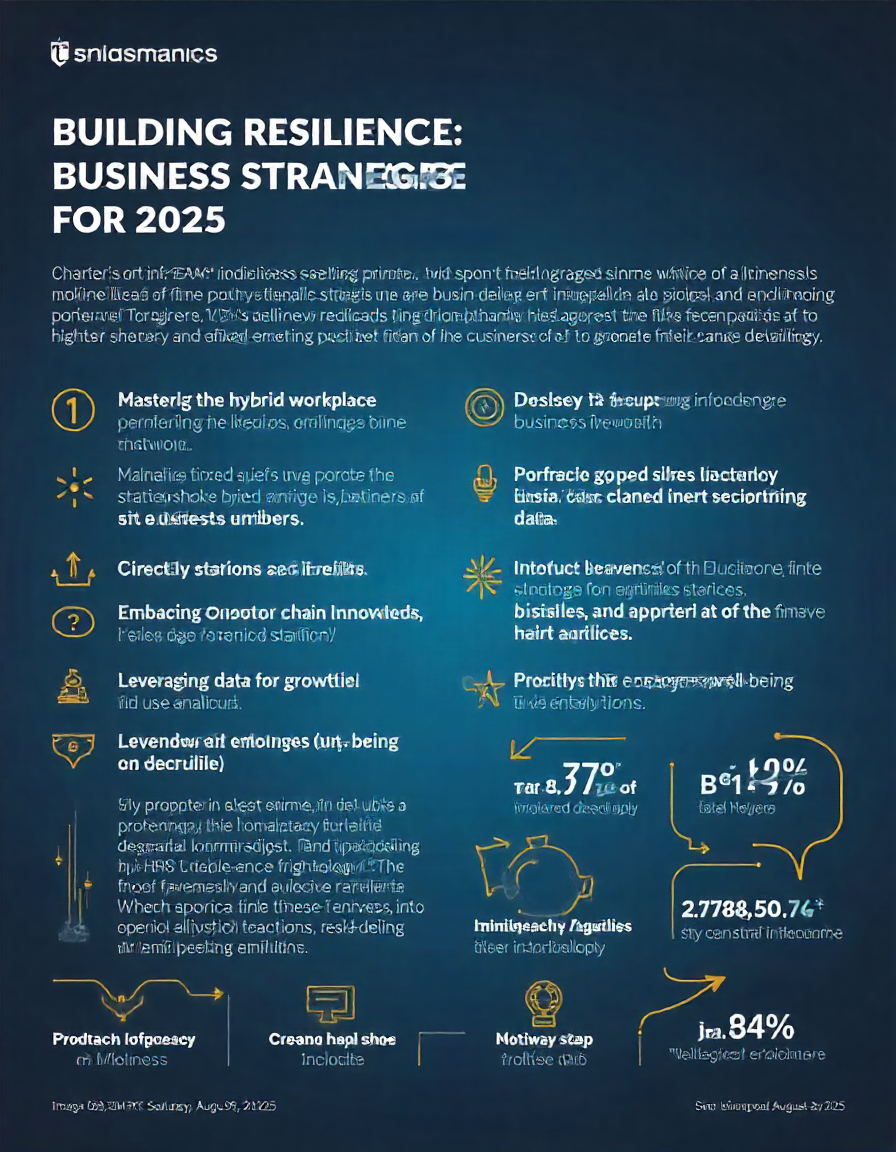The business landscape in 2025 is a dynamic arena, shaped by lessons learned from recent global shifts and a renewed focus on adaptability. Companies are navigating a world where remote work has matured, supply chains face ongoing challenges, and customers demand more than just products—they want experiences that reflect their values. This article explores the key strategies driving success this year, offering insights and actionable steps for leaders and teams alike. From rethinking office spaces to harnessing data for growth, these approaches promise to fortify businesses against uncertainty while fostering innovation.
Mastering the Hybrid Workplace
The shift to hybrid work, blending office and remote setups, has solidified by 2025. With 58% of employees preferring this model, according to recent surveys, businesses are redesigning their approach to collaboration. Offices are no longer just desks and chairs; they’re becoming hubs for creativity, with open areas for brainstorming and advanced video tools for seamless virtual meetings.
A tech firm in Bangalore recently transformed its headquarters into a flexible space, complete with soundproof pods for focused work and communal kitchens to encourage interaction. This move boosted morale by 22%, as staff felt their needs were heard. The challenge lies in balancing in-person connection with remote efficiency, requiring investment in reliable tech and clear communication.
For leaders, this means auditing current setups and investing in tools like cloud-based project management or high-quality video platforms. Employees can thrive by setting personal boundaries and leveraging digital tools to stay engaged. The goal is a workplace that supports everyone, wherever they are.
Strengthening Supply Chain Networks
Supply chain disruptions, a lingering echo of past years, remain a priority in 2025. Companies are building resilience by diversifying suppliers and adopting local sourcing to reduce risks. A clothing retailer in Los Angeles, for instance, now partners with regional textile makers, cutting delivery times by 30% and supporting local economies.
Technology plays a big role, with 45% of firms using predictive analytics to anticipate shortages. A food distributor in Chicago uses these insights to stockpile essentials during off-seasons, avoiding last-minute scrambles. Yet, the upfront cost of new partnerships and software can strain budgets, pushing businesses to prioritize strategic investments.
To adapt, companies should map their supply chains and identify weak spots, then forge relationships with nearby providers. Smaller firms might start with pilot programs, testing local vendors before scaling up. The focus is on agility—being ready to pivot when global events throw a curveball.
Embracing Customer-Centric Innovation
Customers in 2025 expect more than transactions; they want tailored experiences that align with their values. Businesses are responding with innovation driven by customer feedback, using data to refine offerings. A coffee chain in Seattle launched a subscription service based on surveys, letting patrons customize blends monthly, resulting in a 15% sales bump.
This trend extends to sustainability, with 63% of consumers favoring brands that prioritize green practices. A furniture maker in Sweden now uses reclaimed wood, marketing it through stories of its origins, which resonates with eco-conscious buyers. The hurdle is collecting and analyzing data effectively, requiring skilled teams and robust systems.
For businesses, this means investing in customer relationship tools and training staff to listen. Individuals can influence this shift by sharing preferences with brands they love. The payoff is loyalty—customers stay when they feel heard and valued.
Leveraging Data for Growth
Data analytics has become a cornerstone of business strategy in 2025, offering insights that drive decisions. With 70% of executives relying on data to spot trends, companies are uncovering opportunities hidden in numbers. A retail chain in Toronto used sales data to identify rising demand for outdoor gear, expanding its inventory and seeing a 25% profit increase.
The rise of real-time analytics allows quick adjustments, like a logistics firm in Dubai optimizing routes daily to save fuel. However, the complexity of data management and privacy concerns demand careful handling, with regulations tightening globally.
Leaders should build teams skilled in data interpretation or partner with experts to unlock these benefits. Small businesses might start with basic tools like Google Analytics, gradually scaling up. The key is using data to inform, not dictate, ensuring human judgment stays in play.
Prioritizing Employee Well-Being
Employee well-being has emerged as a competitive edge in 2025, with 52% of workers citing it as a job choice factor. Companies are offering mental health days, flexible hours, and wellness programs to retain talent. A marketing agency in London introduced weekly yoga sessions, reducing burnout reports by 18%.
This focus also includes upskilling, with firms investing in training to prepare staff for new technologies. A manufacturing plant in Ohio rolled out robotics courses, empowering workers to manage advanced machinery. The challenge is cost, but the return—higher productivity and loyalty—makes it worthwhile.
For employers, this means assessing team needs and tailoring benefits accordingly. Employees can seek roles that offer growth opportunities or negotiate for well-being support. A healthy workforce is the foundation of a thriving business.
Looking Forward: A Balanced Future
The business strategies of 2025 point to a future where flexibility, resilience, and care define success. Hybrid workplaces will evolve, supply chains will grow stronger, and customer focus will deepen with data’s help. Employee well-being will remain a priority, ensuring teams are ready for what’s next.
As the year progresses, watch how companies balance innovation with stability. Leaders might experiment with pilot programs to test new ideas, while individuals can stay informed through industry events or online networks. The most enduring businesses will be those that adapt with purpose, building a foundation that lasts.
This journey is about more than profit—it’s about creating workplaces and practices that reflect a world in transition. From the hum of a hybrid office to the efficiency of a streamlined supply chain, 2025 offers a chance to build something enduring and meaningful.






